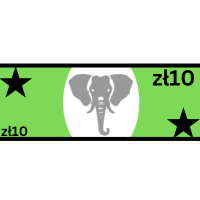Zambora: A Nation of Strength and Diversity
Geography and Location
Zambora is a small yet strategically significant country located around Cape Three Points in present-day Ghana. Spanning approximately 250 miles, Zambora’s landscape is diverse, featuring a mix of coastal regions, tropical rainforests, and rolling savannas. The country’s southern coast provides access to rich marine resources and trade routes, while its inland regions are home to fertile agricultural lands and mineral deposits. The climate is tropical, characterized by warm temperatures, a distinct wet and dry season, and the seasonal influence of the Harmattan winds.
People and Culture
Zambora is a multi-ethnic nation with a vibrant cultural identity. The Zamari people are the native inhabitants of Zambora, forming the majority ethnic group. They have a deep-rooted history in the region and play a key role in shaping the country’s traditions, language, and governance. Alongside the Zamari, there is also a significant population of people from Akan heritage, who have influenced various aspects of Zamboran culture, including music, cuisine, and traditional governance structures.
The country’s official language is English, used in government, education, and business. However, Angzami, a language native to the Zamari people, is widely spoken across the country, even though it remains unofficial. Many citizens are bilingual, switching between English and Angzami in daily life, reflecting the nation’s cultural complexity.
Political System and Governance
Zambora operates as a social democracy, balancing free-market policies with strong social welfare programs. The government ensures universal healthcare, education, and labor protections while allowing businesses and industries to thrive under regulated conditions.
The nation is led by the High Chancellor, who serves as both the head of state and government. The government consists of a parliamentary system, where elected representatives debate and pass laws to ensure equal opportunities and fair resource distribution. Elections are held regularly, and political participation is high, with citizens actively engaged in shaping national policies.
Capital and Major Cities
The capital city, Zamboriya, serves as the political, economic, and cultural hub of the country. Situated near the coast, Zamboriya is a bustling metropolis with a mix of modern infrastructure and historical landmarks that reflect the nation’s rich past. The city houses government offices, financial centers, universities, and cultural institutions, making it the heartbeat of Zambora.
Other notable cities include:
- Nyamazi – A major agricultural and trade center known for its thriving markets and export industries.
- Lusaka Bay – A coastal town famous for its fishing industry and growing tourism sector.
- Tamgora – Located inland, this city is rich in mineral resources and is an emerging industrial hub.
Economy and Industry
Zambora’s economy is diverse but faces challenges due to economic disparities and external market dependencies. The country relies on several key industries:
- Natural Resource Extraction – Zambora is rich in minerals, oil, and timber, which contribute significantly to national revenue.
- Agriculture – Farming is a major employer, with crops such as cocoa, maize, and palm oil being cultivated for both local consumption and export.
- Fisheries – The coastal location allows for a thriving fishing industry, providing seafood to both domestic and international markets.
- Tourism – Zambora’s beaches, wildlife, and cultural heritage attract visitors, although the sector is still developing.
- Manufacturing and Trade – The country is working to build a stronger industrial base, focusing on textile production, food processing, and small-scale manufacturing.
Despite these strengths, economic disparity remains high. A wealthy elite controls much of the economy, while rural communities struggle with poverty and limited infrastructure. The government has implemented social welfare programs to address these issues, but challenges remain in achieving widespread economic equity.
Currency System
Zambora’s official currency is the Zamboran Lira (ZBL), introduced in 2025 to stabilize the economy after the collapse of the previous currency. The Lira is designed to reflect Zambora’s cultural identity, featuring national symbols, heroes, and security features to prevent counterfeiting. However, due to economic challenges, the exchange rate remains low, making imports expensive and affecting the purchasing power of citizens.
National Symbols and Identity
Zambora takes pride in its national symbols, which represent its resilience, history, and unity:
- National Animal: The elephant, symbolizing strength, wisdom, and endurance.
- National Motto: “Strength in Unity, Prosperity in Independence” – Emphasizing self-sufficiency and collective progress.
- National Flag: A tri-colored flag with green (representing the land and prosperity), blue (for the ocean and trade), and gold (for wealth and resilience).
- Independence Day: Celebrated annually with parades, cultural events, and national ceremonies.
Challenges and Future Prospects
As a growing nation, Zambora faces several challenges, including:
- Economic Disparity – The government is working to bridge the gap between the wealthy and the lower-income population.
- Infrastructure Development – Rural areas need better roads, healthcare facilities, and educational institutions.
- Political Stability – While the social democracy system is strong, maintaining long-term stability is key to growth.
- Environmental Protection – Deforestation, pollution, and coastal erosion are concerns that require sustainable solutions.
Despite these challenges, Zambora remains a nation of resilience and ambition. With a rich cultural heritage, strategic location, and a government committed to social progress, the country continues to move toward a brighter future, where all citizens can thrive and contribute to its development.













